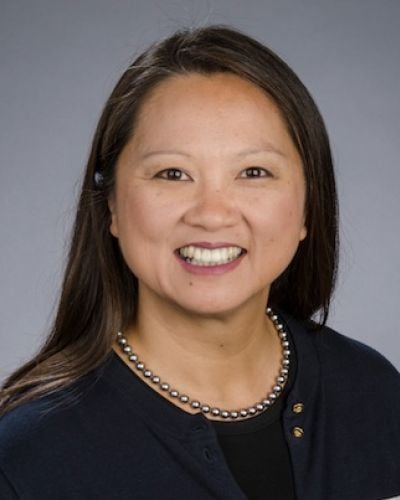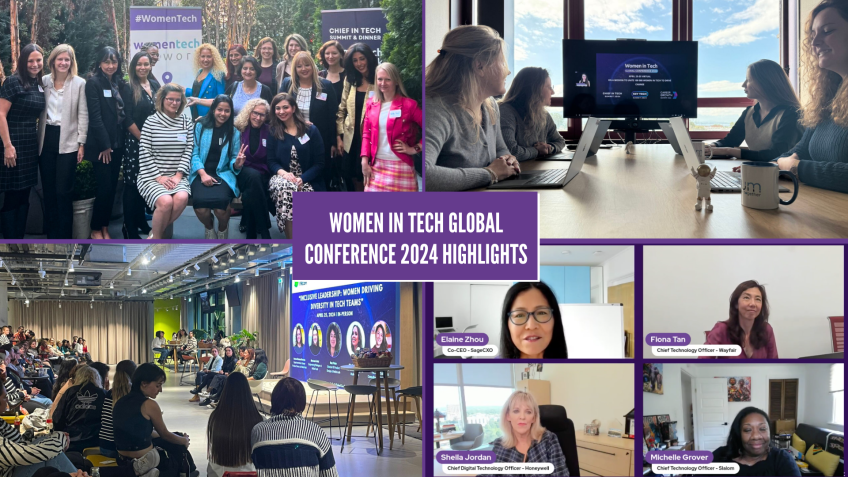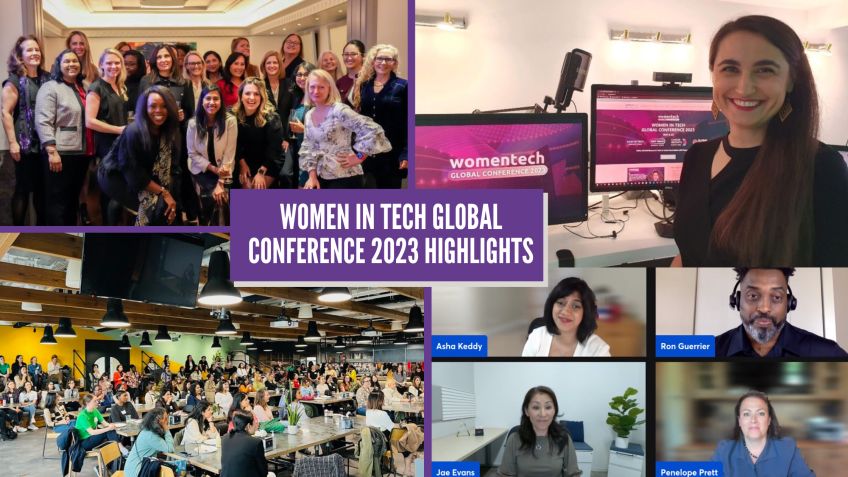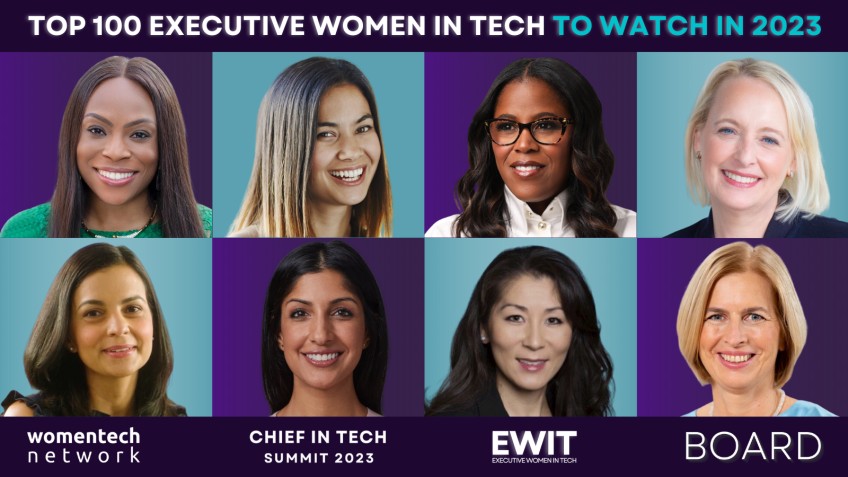How to shatter the double-paned glass ceiling for Asian American women
Kelly C. Huang
Executive/Leadership CoachBreaking Through the Double Pane Glass Ceiling: Empowering Asian American Women in Corporate America
Hello there, I'm Kelly Huang. Today, I'll shed some light on how to break through the double pane glass ceiling to help Asian American women reach the C-suite and the boardroom. My interest in the issue stems from my former role as the co-chair of the Woman and Bios Boardroom Ready program. The platform has onboarded 135 women out of 150 participants, underscoring the relevance of board diversity...
The Disparity Between Educational Attainment and Corporate Representation
In the journey towards helping high potential women reach the C-suite, we note a consistent lack of representation at the highest level in corporate America. This has led me to investigate the factors that might be holding these high achieving women back. The prevailing thesis is that academic achievement translates into corporate success. However, data does not support this theory...
The Three Forms of Bias Confronting Asian American Women
As we dig deeper into the seemingly unbridgeable gap between educational attainment and corporate leadership representation, we identify three types of biases working against these women. These comprise unfair assumptions, unwanted attention, and unequal access. Overcoming these biases could significantly enhance their chances of accessing and ascending the corporate leadership ladder...
The Glass Ceiling Effect: A Dual Challenge
Asian American women face what I term the "double pane glass ceiling." It captures the dual nature of the challenges they confront – the gender effect and the racial effect. The latter, according to an Asen advocacy group study, happens to be "almost four times as great as the gender effect." Hence, Asian American women experience both forms of bias at an exacerbated level...
1. Unfair Assumptions
- Often, the unfair assumptions made about Asian American women relate to their alleged propensity towards specific kinds of work or prevailing career needs. This stereotype, dubbed as the "model minority myth," often limits the professional development and advancement of many Asian American women...
2. Unwanted Attention
- Asian American women in the workplace often have to deal with an unwanted spotlight on them, primarily influenced by mainstream media representations and cultural perceptions. This attention often objectifies these women, reinforces stereotypes, and fosters discomfort in the workplace...
3. Unequal Access
- The battle against biases and stereotypes often leave Asian American women grappling with unequal access to opportunities. A lack of inclusivity can hinder their career advancement and derail them from reaching the C-suite...
Addressing the Biases With Concrete Solutions
To address these biases, we need concrete solutions that can foster diversity and inclusion in corporate America. I propose three potential solutions:
1. Leaders and Managers Should Check Their Own Biases
Encourage C-suite leaders and hiring managers to challenge their own biases about what a leader should look like. This can help reframe their mindset and regard linguistic, cultural, and navigational capital as leadership assets instead of apparent differences...
2. Leverage on Employee Resource Groups (ERGs)
ERGs are crucial for fostering a sense of belonging and inclusivity in the workplace. They're not just a tool for recruiting but also a space where marginalized groups can feel supported and heard...
3. Promote Community Involvement
Community involvement can foster a sense of belonging and showcase their leadership capabilities. It's a win-win for the employees and the teams they operate within...
Breaking through the "double pane glass ceiling" requires a comprehensive, thoughtful strategy. I hope that you'll take these insights to heart and work towards making your organization more inclusive and diverse.
To learn more about this topic, you can find my article on the Forbes Coaches Council. I'm also available to connect on LinkedIn. Thank you for joining me, and let's break some glass ceilings together!
Video Transcription
Hi, everyone. This is Kelly Huang. I'm so glad to be here to shed a light on how to break through the double pane glass ceiling as it relates to how to help Asian American women in the workplace reach the C suite and the boardroom.And I became interested in this topic for my work as the former co-chair of Woman and bios Boardroom ready program where we've on board, 100 and 35 women out of 100 and 50 participants. Hence, the topic of board diversity is very relevant. However, in helping these high potential women reach the C Suite as a coach, I'm seeing a consistent lack of representation at the highest level in corporate America. So I'm trying to uncover what could be holding these high achievement, high achieving women back. I thought about whoever was voted the most likely to succeed, whether that was back in high school or in college. And usually that person was the one with the highest GPA or the best scholar. But in corporate America today does academic achievement translate into success in the C Suite. Well, unfortunately, the data does not support that and I'm gonna share some of that with you. So in my talk, I'm gonna specifically discuss the three types of biases working against these women.
But furthermore, in gaining a better understanding of these biases, I'm also hopeful that there are things that we can do to address them in my, in the second half of my talk. So first, let me get to the data. So I have four pie charts here. The two on the left talks about basically how higher education attainment is very high within the Asian population. So out of the general population, 38% have college degrees. So that's the one you see on the second chart from the left. But then the first one on the left demonstrates that 61% of Asians do all have college degrees as compared to 38% of the general population. And then on the right hand side, you see that there are about 13% of the professional workforce um that Asians are representing according to KPMG S board Learning Center analysis. But out of that statistic, they also only show 6% of the executives are Asians and only 4% are holding fortune 1000 board seats and an even smaller sliver you see there, the 1.8% are represented at the c suite level for Asian American women in the workplace. So you may ask, why is it important to raise this dismal 1.8% figure other than for diversity reasons. Well, there's a very good business reason and let me tell you why.
So from a global perspective, more than half the consumers live in Asian countries and their spending is expected to grow to about half of the world's spend consumer spending by 2032. So not too far from now, and with India and China predicted to have the greatest increase in their consumer classes. So we do need these Asian American women to be representing in the C suite and in the boardrooms so that they can be the cultural and the language ambassadors to better capture these up and coming demographic of global consumers. So let me get to the glass ceiling and what that means. So what do I mean by the double pane glass ceiling? Well, there's two pains and maybe it's better that I call the pain pain. So one pain is the gender effect. So typically that shows up as the double bind or the discrimination women face in the workplace, but the other pain is the ratio effect. So in fact, Asen an Asian American advocacy group, they did a study of the Silicon Valley firms, the technology companies that they found the Asian effect is actually four times, almost four times as great as the gender effect.
And that the double binds even more acutely felt by these A I A api women in the workplace. So I'm going to break down some of these by three of these biases specifically that are constantly challenging these women. And so the first one is the unfair assumptions. The second one is the unwanted attention heaped upon these women. And then third is the unequal access faced by these women in the workplace. Let me get to the first one. And what are some of those unfair assumptions? So what do we, what do we see here in this time magazine cover? This is back in 1987 where they showcased the various whiz kids back in the day, the the ones in the ponytail, the ones with their books. And so the model minority myth is very much alive. But what's unfair about them is that they're painting these Asian American students and workers in one broad stroke. And in fact, the Asian American community has about 20 plus different groups and they're not all the same in terms of demographics and education attainment level. Um and even cultural differences. So that model minority can really be um a problem when it comes to furthering some of these other stereotypes where you know, the Asian American workers are the worker bees, they're quiet, they belong only in it or engineering.
And furthermore, they are also the unfair islamophobia stereotypes that came out of 9 11 2 for the South Asians. And like I said, with the double bind, the women in the workplace are feeling that even more acutely even though they already face the double bind gender effect, but the racial effect or the Asian effect, as I said is almost four times greater. So they, you know, double doubly, um, being held to this, you're too nice and, or you're not aggressive enough, right? It's four times greater instead of two times greater. Um, and I just want to point out kind of just breaking this model minority myth. Um, the arrows pointing at MAOA, he's actually a famous actor in a TV show called um uh Hero H er O where he played Hero Hiro. And he also has been in Hawaiian 50 So way to go for breaking through that stereotype. Next, I'm gonna talk about the unwanted attention. So in the picture here, I'm showing Anna May Wong. She's beautiful and actually was a very famous actress in the twenties, but she unfortunately got siloed into the perpetual foreigner role where she was always the exotic Asian woman or she was the Geisha or she was the assassin.
And up to a point even she couldn't take on those roles anymore. She left Hollywood. Um but I'm glad to say there's a nice ending to that. She is gonna be on a US postage postage stamp to celebrate her achievement. But you know, you do see that the media portrayal is very much geared towards painting Asian women in this unwanted, you know, in this, in this light. And even more recently, the Vietnam War movies also tend to paint these Asian women as the comfort woman or in compromising positions. And you can only imagine that makes for very unpleasant comments or attention right from um whether that's in a workplace or even just out on the street and even with the recent, you know, stop Asian hate that I think kind of stereotype is not helping. And I also want to bring up the fact that our own heritage culture brings on a at a level of unwanted attention. So I've been on the receiving end of this where I've heard from my own parents and relatives that say women in our country don't do that or in the workplace. Um My Asian elders will remind me that, hey, you're supposed to respect your elders.
So all these heritage culture expectations can also be the unwanted attention. And lastly, let me get to the unequal access. So in this, I wanna um showcase this bane and company survey and of about 10,000 people surveyed what they do show of all these marginalized groups that in particular Asian women and Asian men are at the bottom when it comes to feeling included. So with Asian women are feeling 20% included and Asian men at a very low 16%. So we already know that lack inclusion can rear its ugly head in terms of the bamboo ceiling effect. But also that lack of representation, you know, the 1.8% can really have some un you know, unfair effects where if people don't see themselves, the entry level, people don't see themselves represented at the highest level, the retention is gonna be that much less. So again, having, you know that active inclusion, having that sense of belonging is very important to the Asian Americans. And there is another recent research that shows that Asian Americans in particular are actively participating in er GS because of this lack of belonging.
So let me get to that because that's gonna be part of my recommendation going forward. So I have three particular recommendations going forward, how as to how organizations can do better. And my first one is to have C suite leaders and hiring managers examine their biases as to what a leader should look like. And so a couple of the recent Harvard Business Review research where I happened to have worked in the past um shows that definitely substituting confidence for confidence is no longer valid, right? Because there is this bias that if somebody is really confident, they tend to be thought of as the leadership type. But in fact, that hasn't borne out to be true. And then another piece of research from Harvard Business Review on Women of color, there are three particular types of leadership capital that we should look at more closely. The first one is navigational capital. So when you think about how immigrant communities, where people come to this country with nothing that somehow they're able to find an apartment, find a job, raise their kids and get them to attain her education.
As you saw in my second slide about how Asians have high education attainment, so that navi navigational capital, that bootstrapping capability is definitely a huge leadership asset to have for any company. And then the second part of the leadership capital that woman color bring to the table is that resistance advocacy capital. So when you think about advocacy, I can think of a few times where I've seen in these immigrant communities, the kids who are fluent in English are the ones representing their parents at the immigration office or at the school meetings. And that advocacy capital is also very good for leadership. When you think about that at such a young age, they're already being thrust to the front and being able to negotiate for their families and negotiate for their communities. And that is also another strong leadership asset to bring to the table. And lastly, as I said earlier, about the global consumer with 50% being represented by the Asian countries that linguistic cultural capital are also gonna be very valuable in a in looking at these international markets.
And little did you? I didn't know this but little did we know that also being bilingual can really help us in decision making. So that linguistic cultural and decision making capability are another set of leadership capital to really consider as you're thinking about promotions and getting people into the C suite. Secondly, I want to talk about these er GS or employee resource groups. So as we saw in AB and company survey that the Asian men and Asian women are really low when it comes to feeling included or, or belong, belonging. Because again, from what I said about the unwanted attention, the perpetual foreigner and the unfair assumptions that they're only worker bees. So being able to have an er G not just a recruiting tool but really as an asset to bring in these marginalized groups, groups and you know, hear them out and also sponsor them and support them in a way that the belonging can really truly occur is important. And I know at this conference, there are many people talking about employee resource groups.
So I hope you'll check those out and learn more about how to implement those in your company because if you don't have one, hopefully there's a way to start one based on what you learn at this conference. And third, I want to discuss how to leverage the community involvement for these Asian American women and men. So as we support these Asian women and men in the company with er GS by having them reach out to their own communities, we're gonna set them up for success and why, why would that be the case? Well, definitely as they get more involved in their community by collaborating with their own company, they're gonna feel that sense of belonging. And in addition, what better way to showcase their leadership capabilities than to have them active in their communities and really demonstrating what they can do.
So these are my three recommendations. So in wrapping up, um I wanna make sure you can get some additional information if you would like to learn more. So first, um I have written on this topic uh on Forbes. So if you search on Forbes coaches counsel and my name, you should be able to find this article. And then secondly, um let me f quickly recap again that we went over the three biases right into the, those into the three buckets. I mentioned the unfair assumptions, the unwanted attention when it comes to stereotypes and also the unequal access when it comes to belonging and networking. And next, in terms of solutions, I recommended first checking, checking your own biases, uh especially those c three leaders, checking your own biases as to what a leader should look like and make sure that they do bring the lead, uh the navigational capital, the app capital, and the cultural capital as much as they can for, for these communities and then sponsor and deploy your er G so that they're not just there for recruiting, but they're really there to help support and retain your A A API employees for the long run.
And then lastly, um I wanna make sure you know how to get in touch with me. So there is the uh my linkedin is there. I know I also posted it in the um in the chat and, and also my landing page. So be sure to check out coach Kelly huang.com/eight 88 and actually 888 is a lucky number in Chinese. So on that note, I wanna wish you prosperity and good fortune going forward and I look forward to hearing from you and I think we have a little bit of time. Does anybody have any questions or comments you'd like to share in the Q and A or in the chat box? I'm happy to answer. I can definitely talk more about um the debating company survey too because I do think that brings up a lot of questions about how the bamboo ceiling effect is really felt right at the company level. And when I look at this, as I said, this survey covered people from us, Canada, Australia, UK, France, Italy, and Germany. And it was about 99,494 participants that responded and you can see right like that.
Um All these marginalized groups and numbers are high but that perpetual foreigner, I think that perpetual foreigner stereotype is, is very insidious. As I said, that racial effect that is ascend has study is four times greater than the gender effect. So I I think if I can, you know, send you with one takeaway is to think about how to really challenge this, right, how to really challenge this sense of belonging and this perpetual, perpetual foreigner feeling that the a a api community are feeling deeply. And so that is where I'm gonna wrap and thank you very much.






